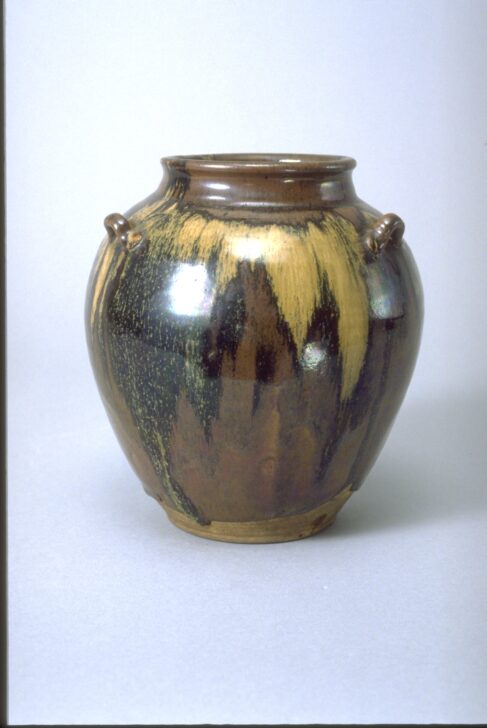Seto Ware (?) Three-handled Jar
Japanese

Description
Three-handled jar
Japan
Edo period (1615–1868)
Mid-17th century
Stoneware with brown, black,
and yellow glaze
Transfer from the College of
Architecture and Design, 1972/2.87
This Seto ware jar is distinguished by bands of contrasting yellow and black
glaze, drawing the viewer’s gaze up, toward the vessel's neck. During the
Kamakura period (1185–1333), Seto wares stood out for their dynamic use
of glaze—whereas potters elsewhere relied on the natural firing process to
create chromatic effects. The pattern on this jar is the result of a chemical
reaction between the mineral glaze, heat, and the ash generated during the
firing process. Seto potters developed a mastery over the process and were
able to control the resulting design of wares produced with a high degree of
accuracy. As such, the appearance of this glaze, and the way it strategically
draws the eye toward the center of the vessel through boldly contrasting
colors, is all the more impressive.
(Japanese Gallery Rotation, Summer 2025)
Usage Rights:
If you are interested in using an image for a publication, please visit https://umma.umich.edu/request-image/ for more information and to fill out the online Image Rights and Reproductions Request Form.